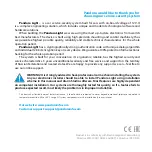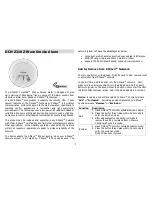
Mercedes-Benz Body & Equipment Guideline for Metris - BM 447, Version November 27, 2015.
!
Please observe the revision notes compared to 09/18/2015 ! Only print out complete sections of the current version!
125
10.1 Center of gravity
10 Calculations
!
Note
Practical determination of the center of gravity
height may only be carried out by appropriately qual-
ified staff using suitable and calibrated scales.
In order to reduce measurement errors, each mea-
surement value should be determined at least three
times and the average should be calculated from
these three values. This value is then used to per-
form the calculation as per equations (3) and (4).
i
Additional information
The wheelbase "I" is defined by the vehicle model
designation (see order) or should be determined
through length measurement.
10.1.2 Determination of the center of gravity
in the z-direction
CoG coordinates in z-direction (height of center of
gravity h
S
for the overall vehicle)
For determination of the overall center of gravity height
of the vehicle h
S
by the upfitter, Mercedes-Benz recom-
mends the following procedure after completion of the
vehicle:
After conversion, the vehicle should be weighed on
a plate-type scale or suitable wheel load scale in two
different chassis positions in succession. Here, the axle
loads measured when the vehicle stands horizontal
and level (GVA and GHA, see 10.1.1 “Determination of
the center of gravity in the x-direction” (
and the axle loads for an axle raised by h’ (QHA or
QVA) must be determined. The lift height h’ should
be as large as possible in accordance with the front
and rear overhang angle of the vehicle (also known as
the angle of approach/departure). The target value is
h’ > 600 mm = 23.62 in.
In order to reduce measurement errors, at least six
individual measurements must be performed for each
vehicle axle when measuring the axle load: three per
axle when the vehicle is in a level state and three when
an axle is raised. Based on the three measurements
in each condition, an average should be calculated for
each axle. The mean value must be calculated from
these three values and this mean value must then be
used when calculating with equations (5) to (7). In
order to improve the accuracy of the final result, the
axle load change should be determined both with a
raised rear axle and with a raised front axle.
!
Note
In order to avoid erroneous measurements, please
note:
•
When weighing with the vehicle level, the vehicle
must be exactly horizontal. Any height differ-
ences between the axles caused by the scales
must be compensated for accordingly.
•
The axle to be weighed must be blocked to
prevent suspension jounce and rebound when
raising to the required lift height.
•
No part of the vehicle may bottom out when
raising to the required lift height.
•
All vehicle wheels must be able to roll: shift
mechanism in neutral position, all brakes includ-
ing parking brake released, chocks placed at a
sufficient distance from the wheels, if necessary.
•
For turning (in order to weigh the other axle),
move the vehicle under its own power so that
any stresses in the vehicle are relaxed.
•
Make sure that no objects inside the vehicle can
move during the measurements.






































